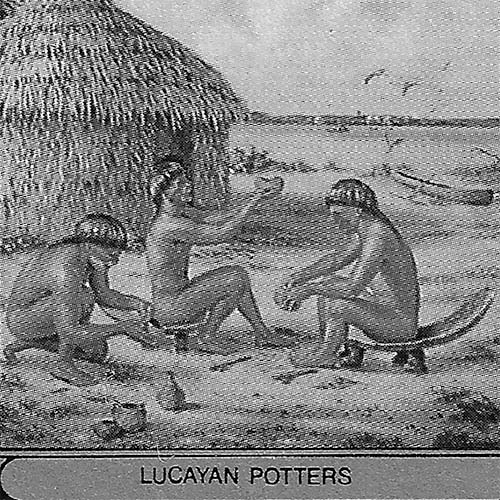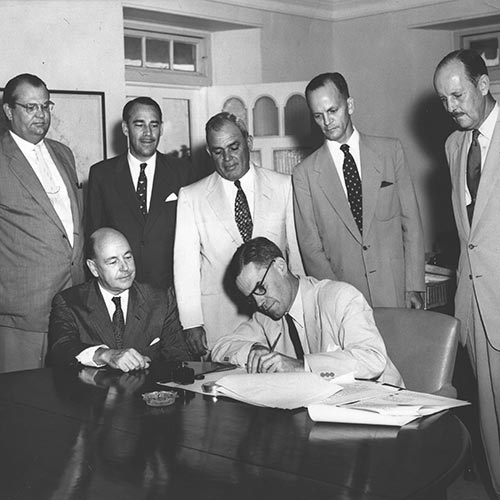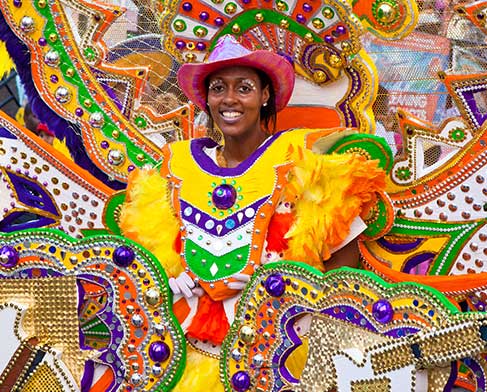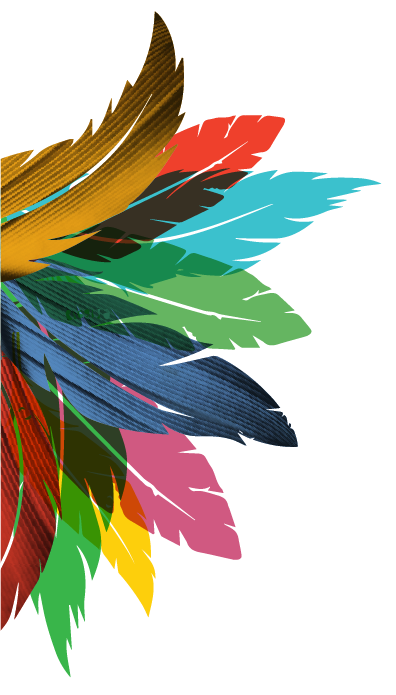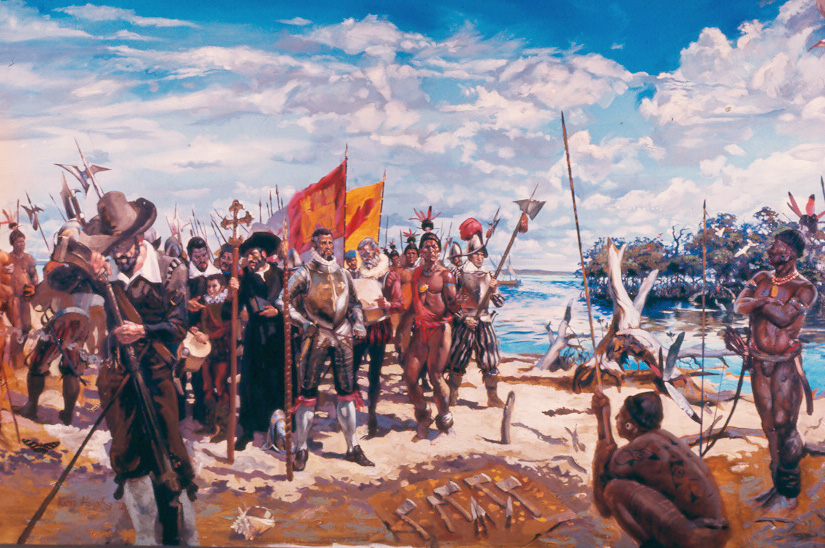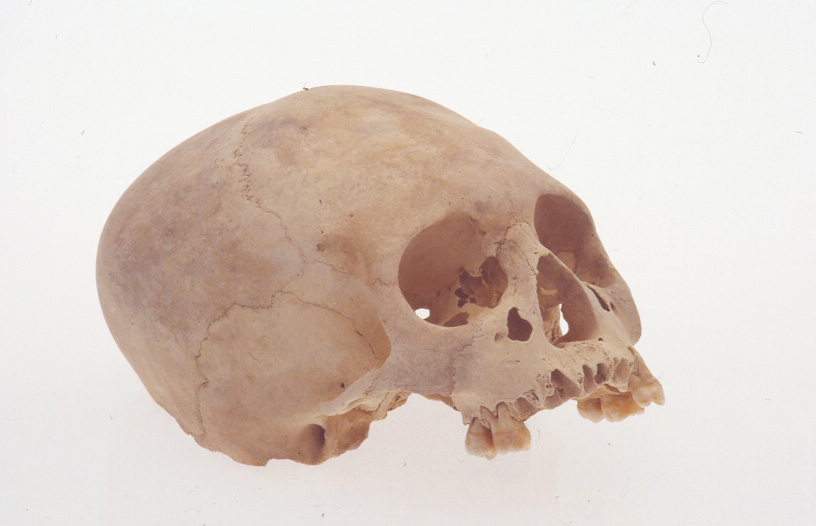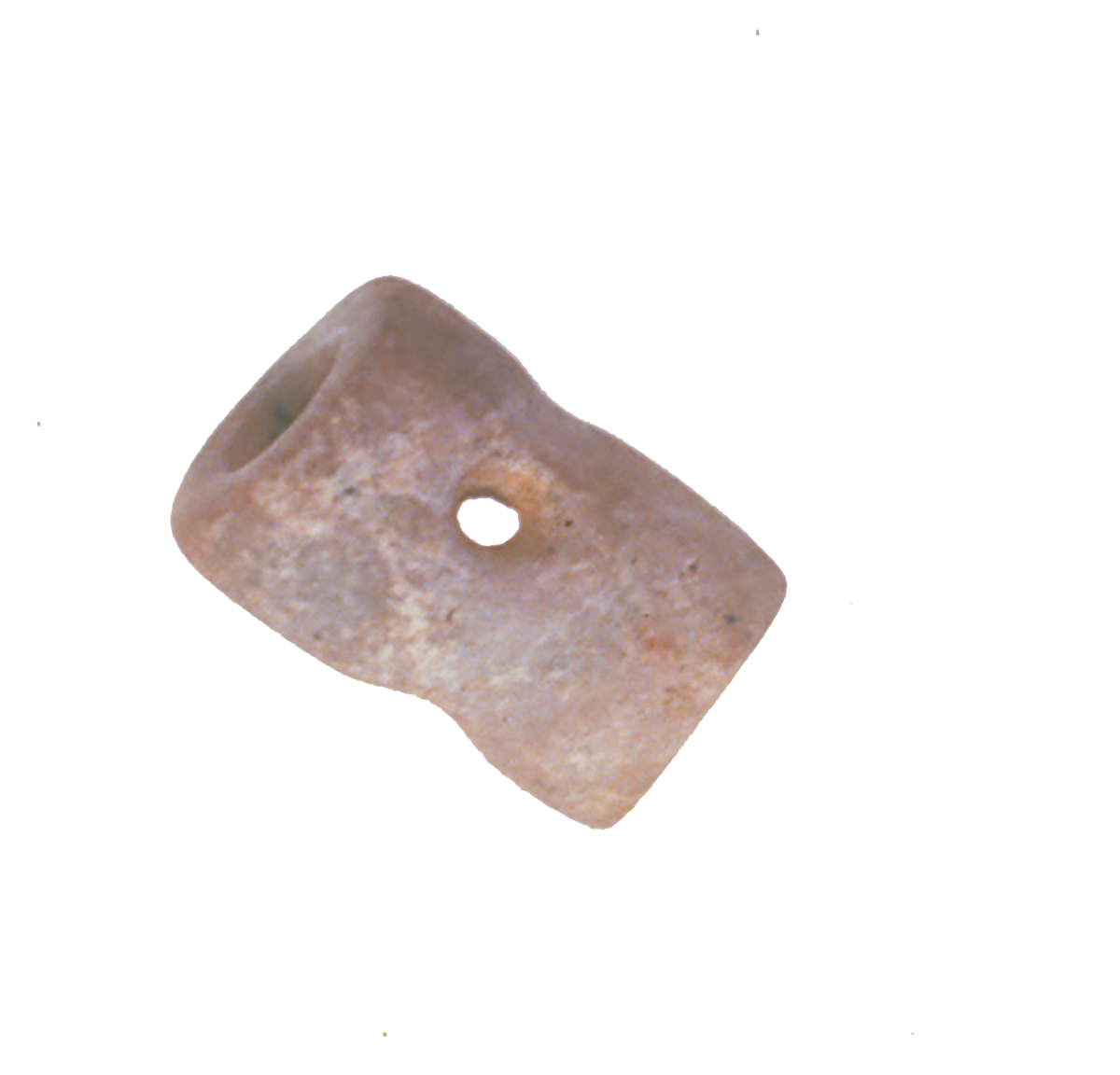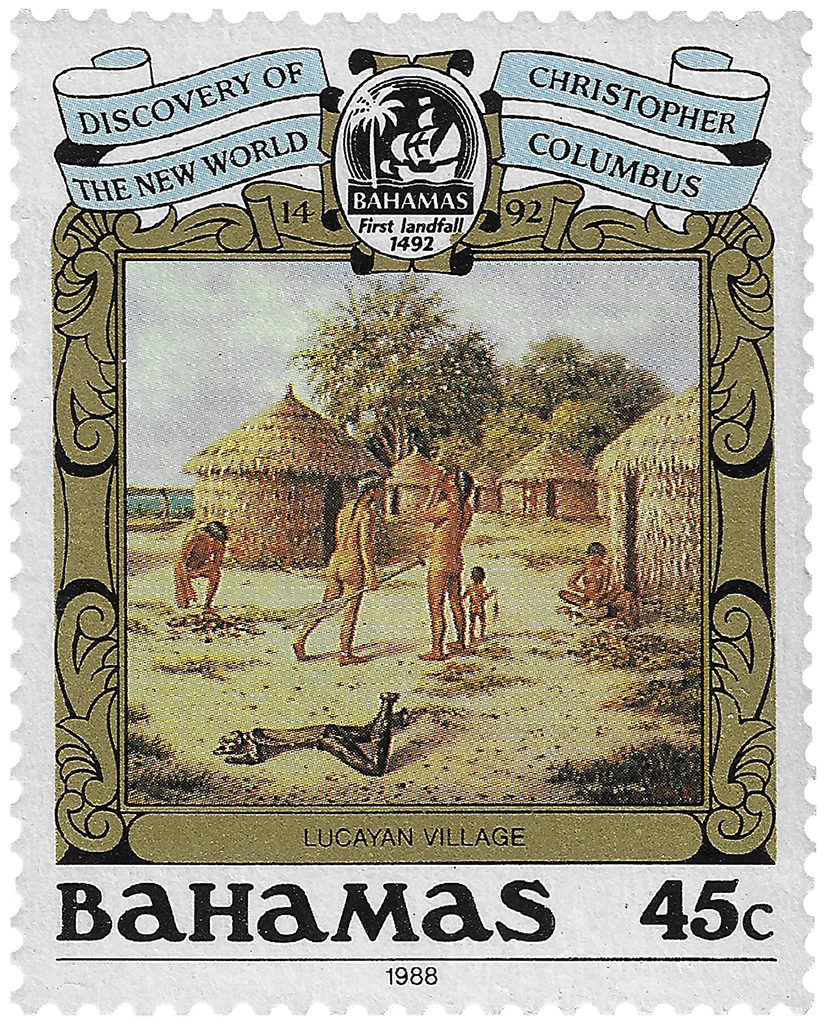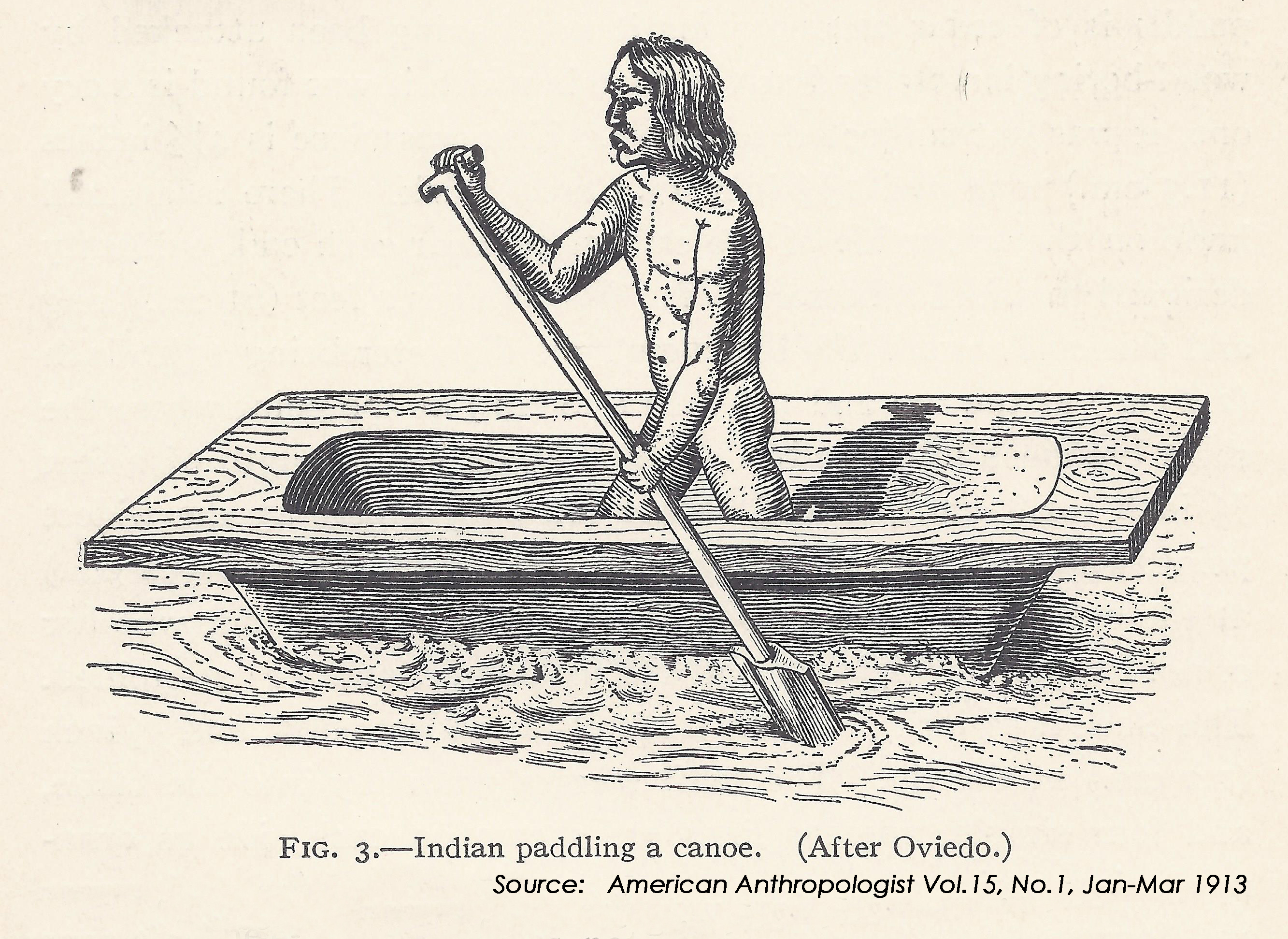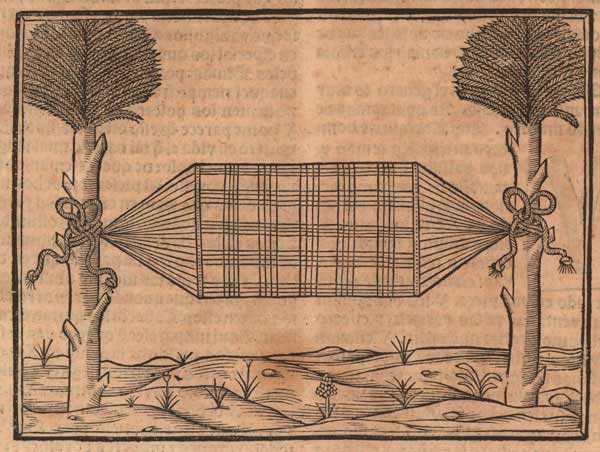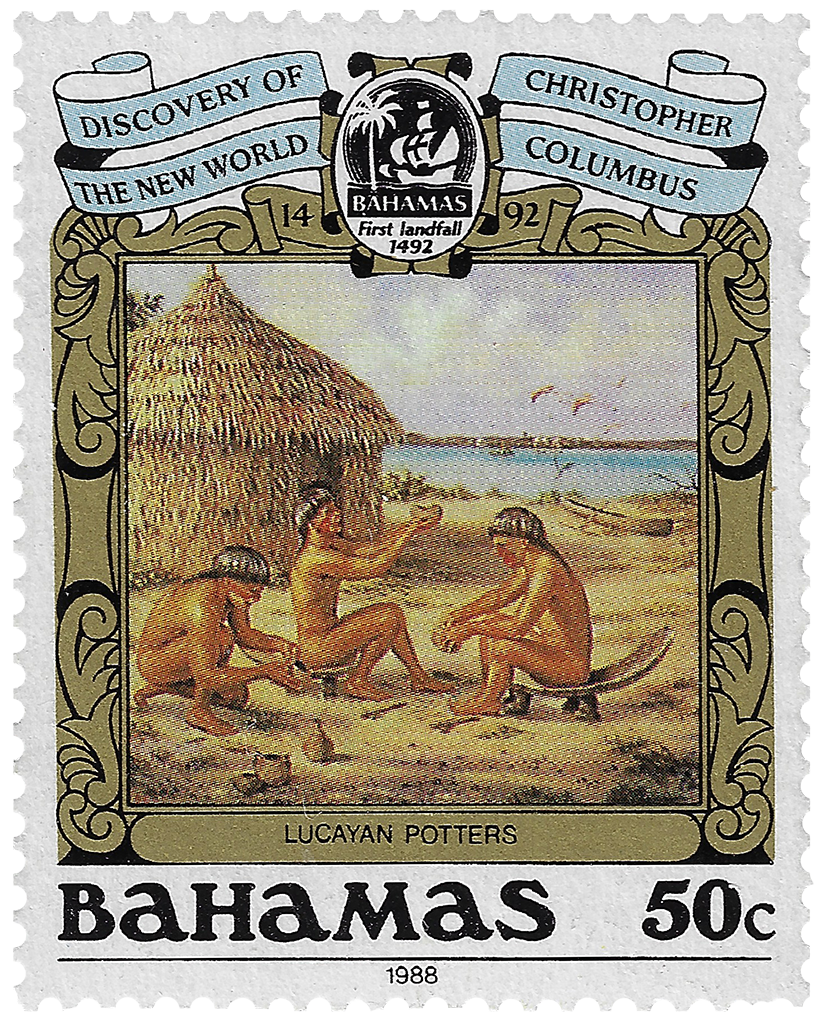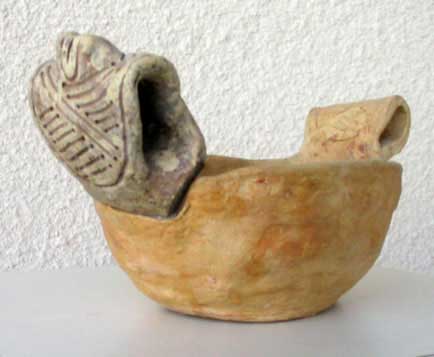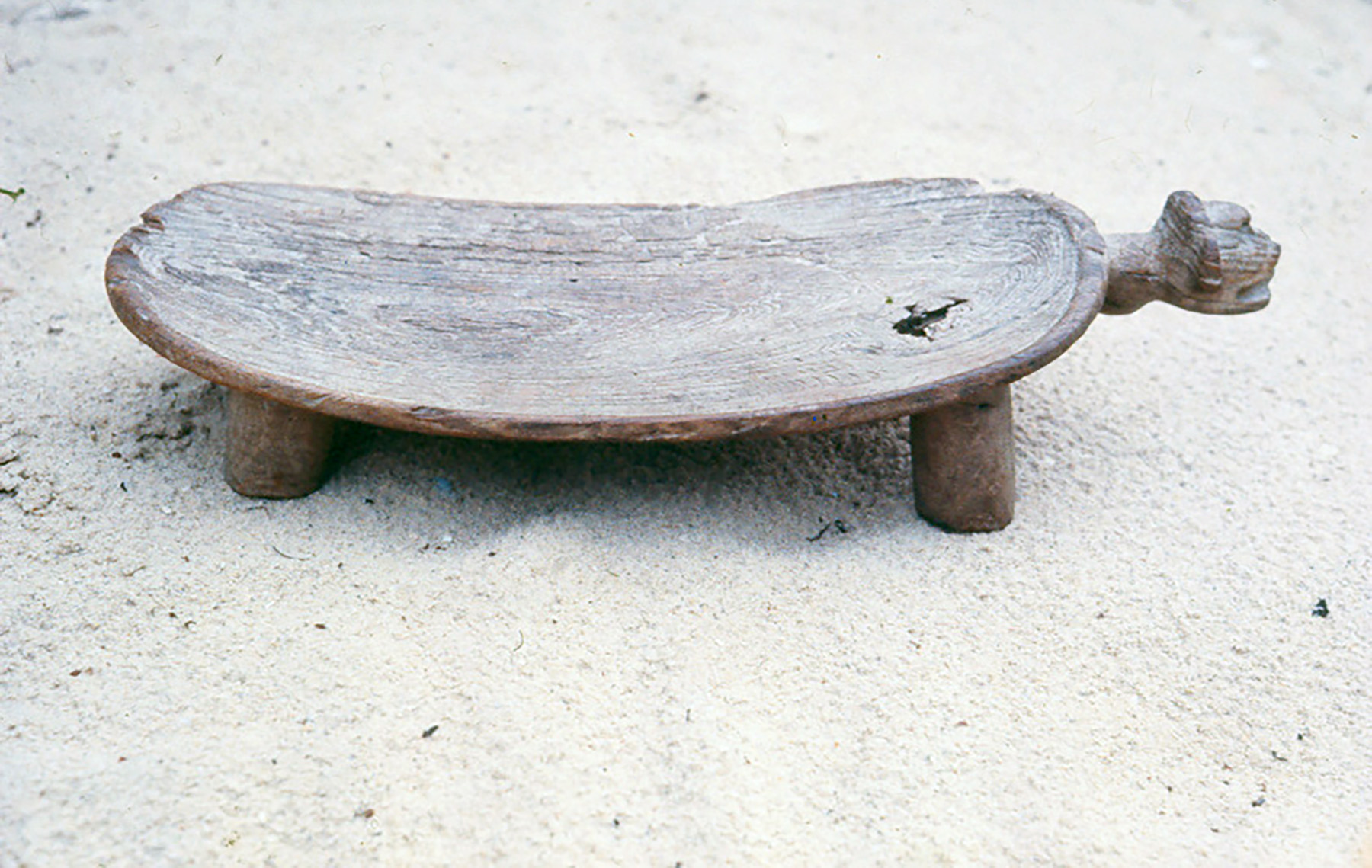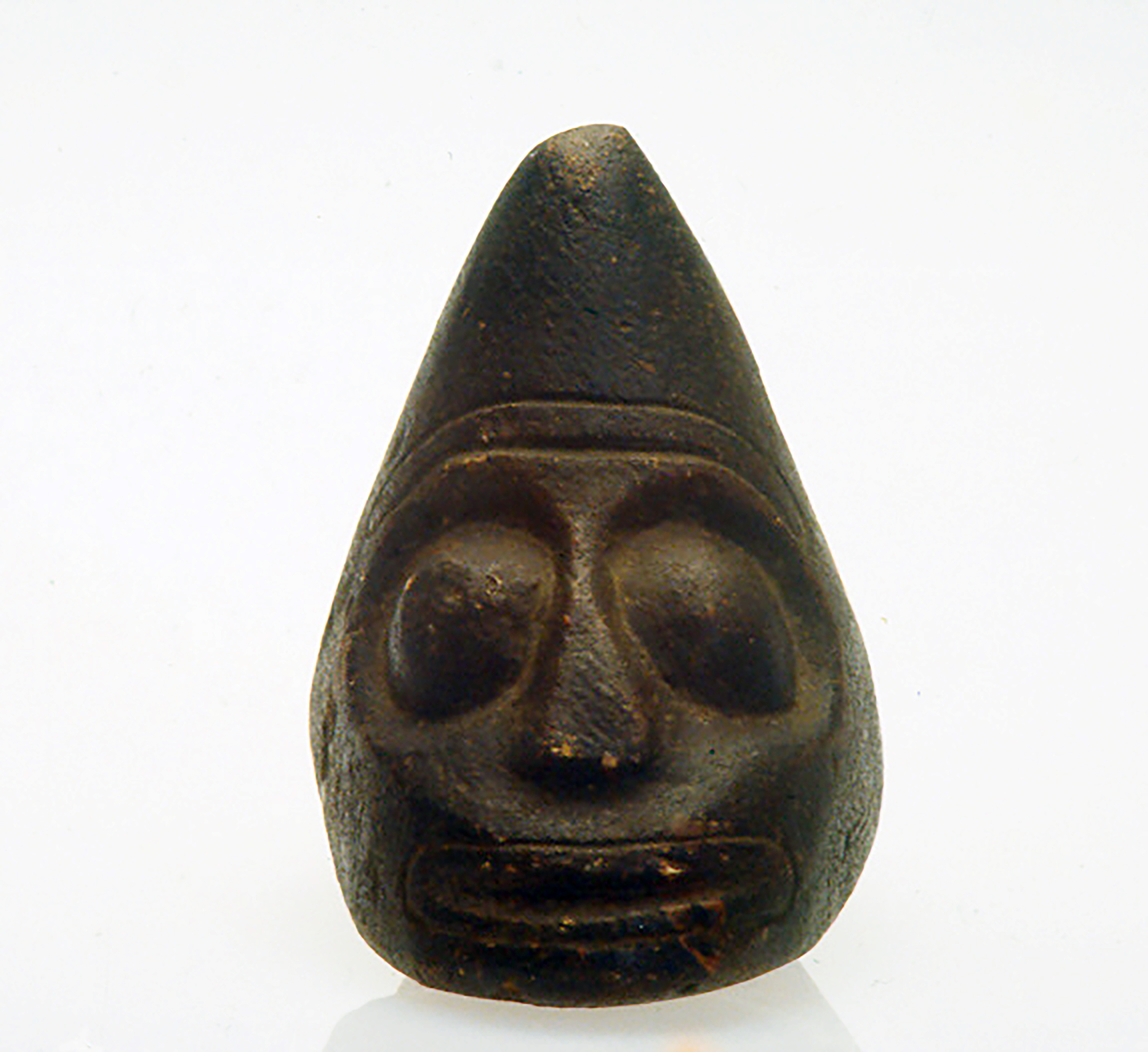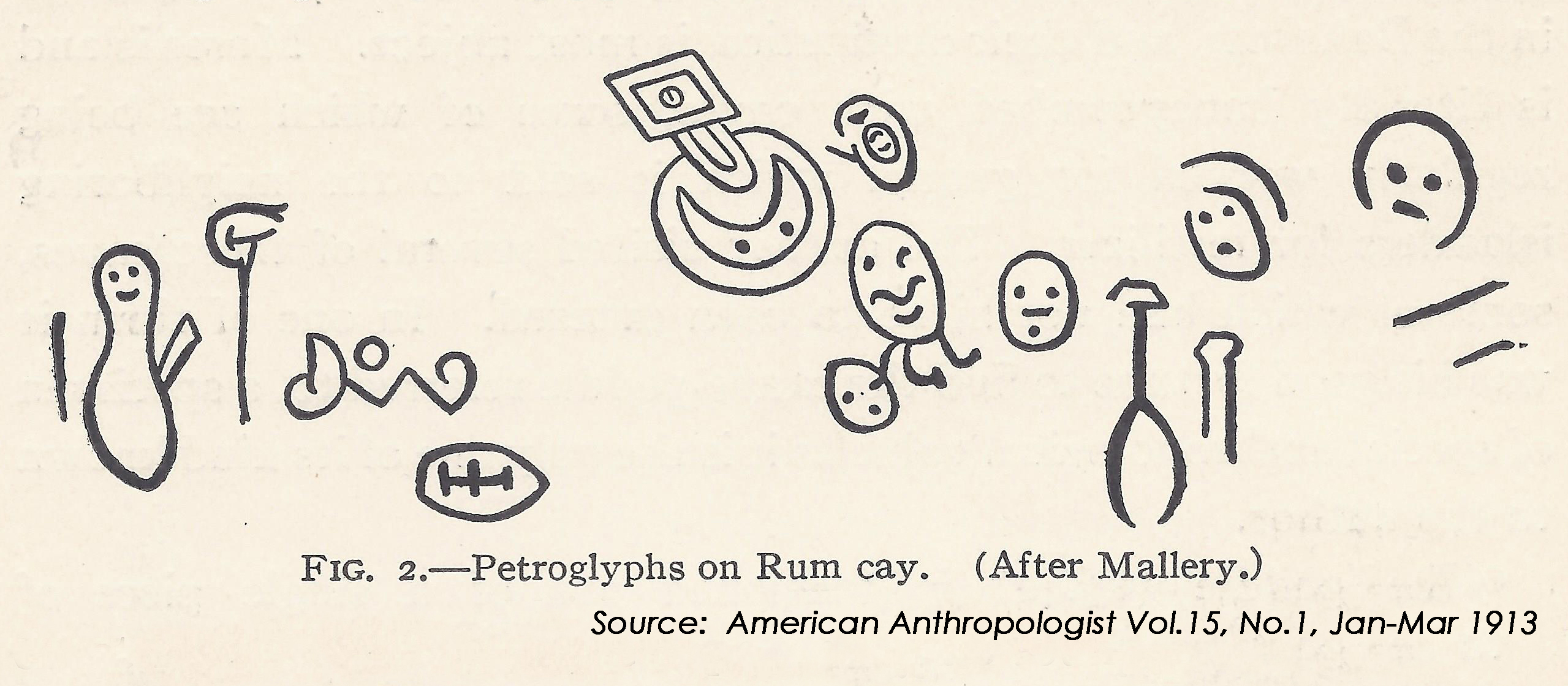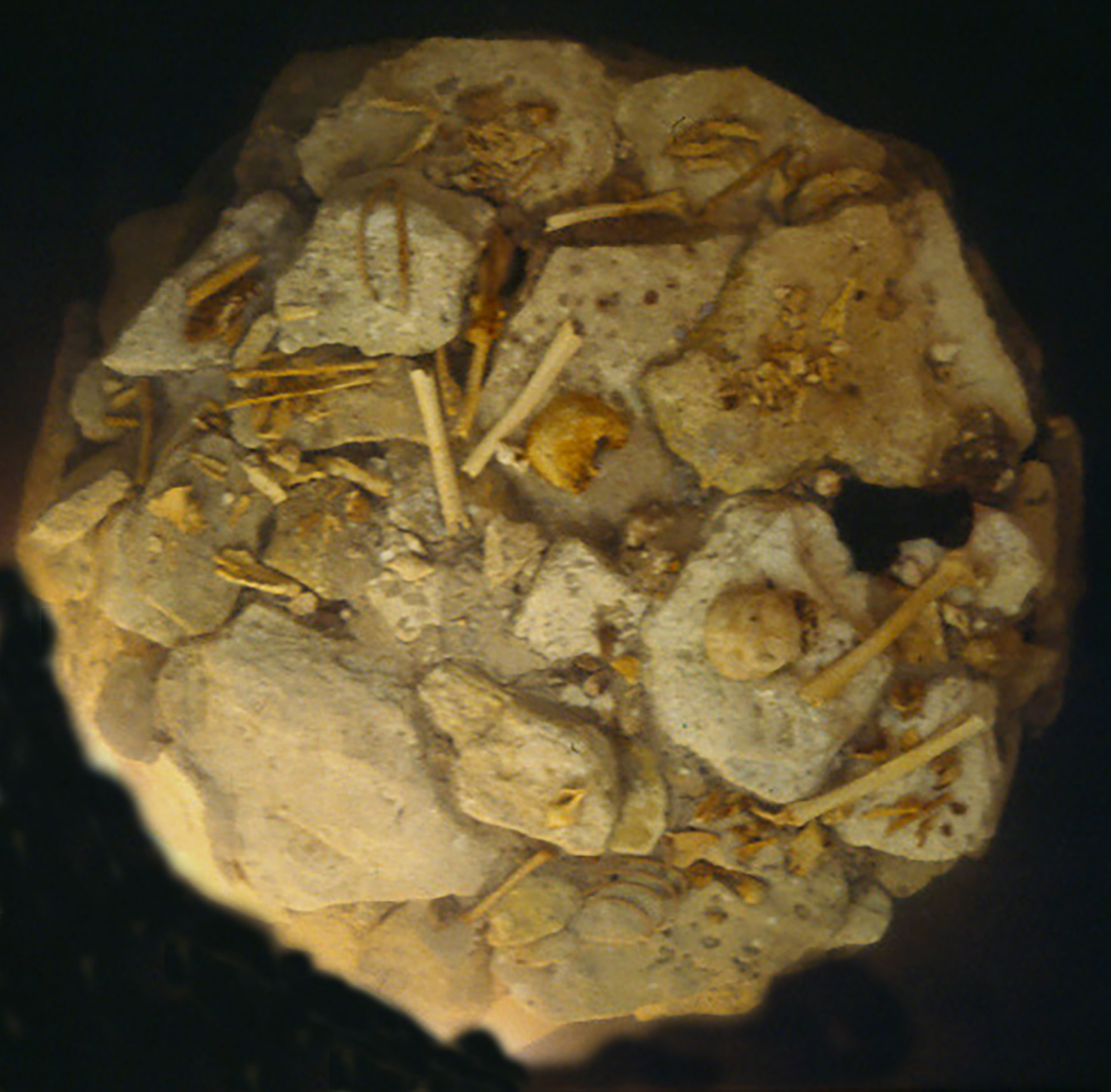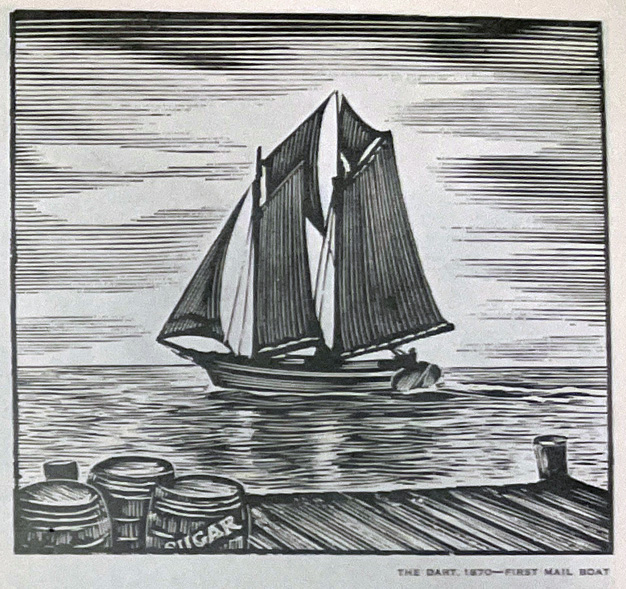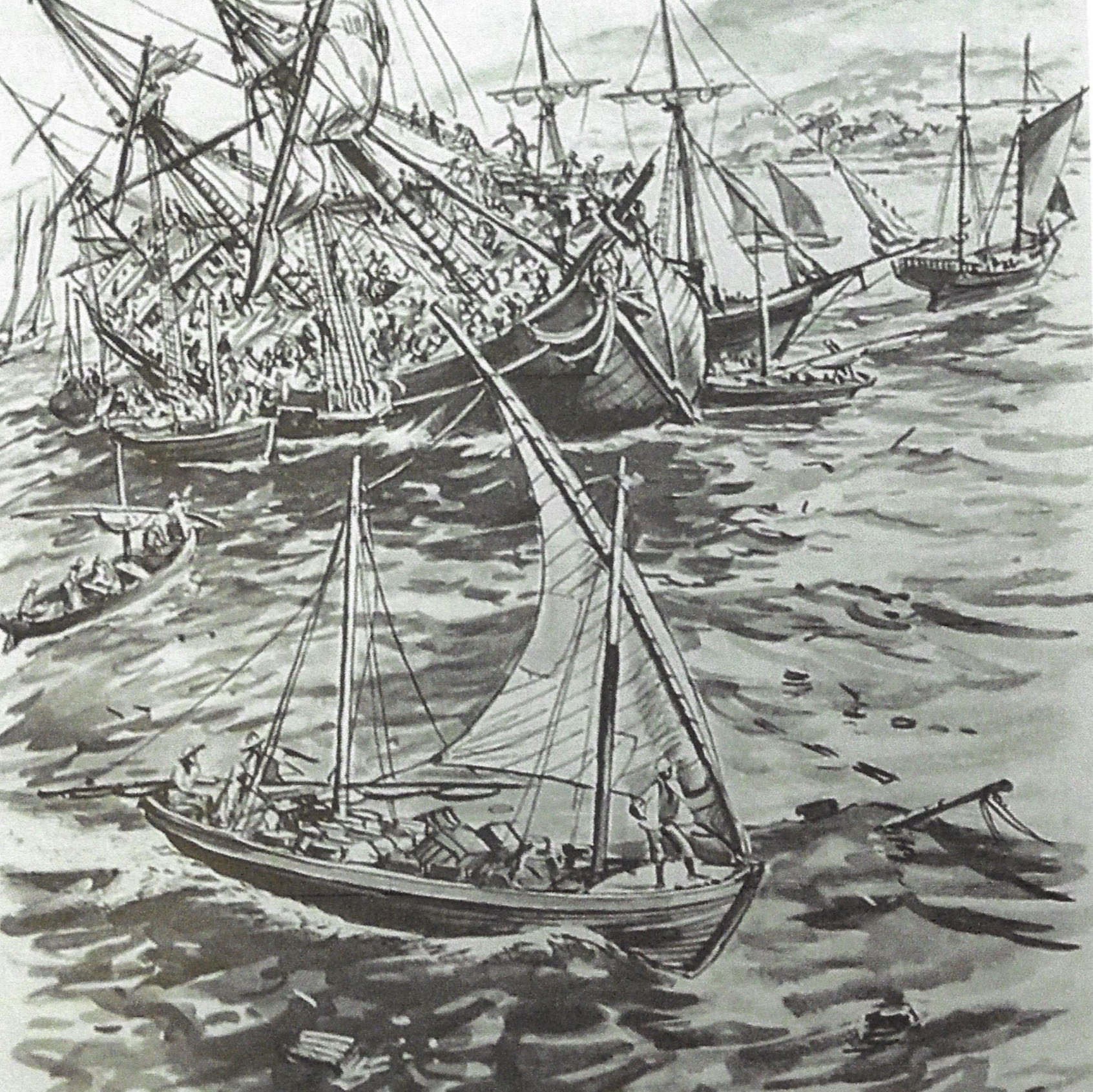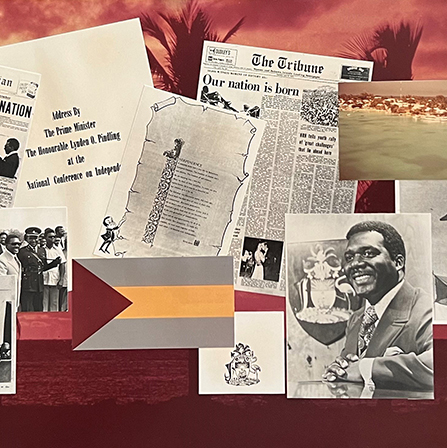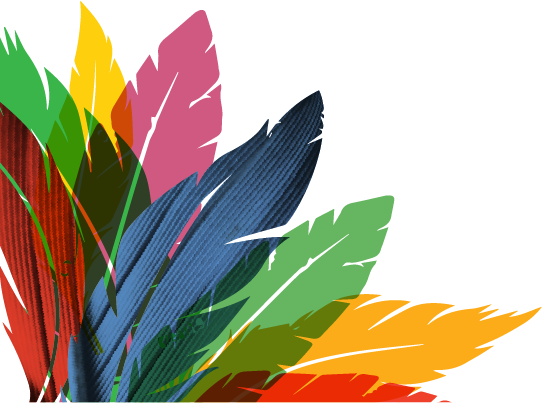History
The Lucayans
The Lucayan Taino
The Earliest Known People of the Bahamas
The earliest inhabitants of the Bahamian archipelago were the Lucayan Taino. They were a branch of the Arawak Indian tribe that migrated from the eastern slopes of the Andes in South America, settling in the Caribbean between 800 and 1492 AD. They called themselves "Lukku-cairi" or "island people." They were a gentle race, forced to flee ever northward, savagely hunted by the fierce Caribs who slaughtered the men and made slaves of the women.
In spite of being taught for generations that the name The Bahamas came from the Spanish words "baha mar" meaning "shallow sea," in truth the word "Bahama" was the Lucayan Taino name given to Grand Bahama. According to extensive research in the Taino language by noted American archaeologist and anthropologist, Dr. Julian Granberry: the word "Bahama" meant "large upper midland."
Other common words used today that originated from the Taino language are iguana, potato, barbeque, tobacco, cay, guava, canoe, cannibal, and hurricane.
Eyewitness Account of the Lucayans
Explorer Christopher Columbus recorded the first account of the New World people. At dawn on October 12, 1492 he wrote in his journal:
"They go about naked as they were born, the women also ... everyone appeared to be under thirty years of age, well-proportioned and good looking. The hair of some was thick and long like the tail of a horse, in some it was short and brought forward over the eyebrows, some wearing it long and never cutting it. Some, again, are painted, and the hue of their skin is similar in colour to the people of the Canaries - neither black nor white."
Columbus thought that he had reached the (East) Indies, so he called these people "Indians." They called themselves Lukku-cairi, meaning "island people." This was later adapted by Europeans into the name "Lucayan."
Columbus noted that "in all, the forehead is broad, more so than in any other people I have hereto seen." The Lucayans practiced a kind of cranial deformation in which the front part of the skull was gently and gradually flattened by placing the newborn infant in a cradleboard with a slanted front-piece fitting over the child's forehead. Frontal deformation was common among Indians throughout the West Indies.
Body painting was common. Men and women wore ear and nose ornaments made of shell, stone, bone, or gold. From Columbus:
"Some are painted white and some red, or any other colour; some paint only their faces and others their whole person, and some only their eyes and noses."
Lucayan Indian homes were made of wood and thatch and were long and narrow or cone shaped. Most villages were spread along the coast behind the dunes. Columbus described the villages he found in the Bahamas:
"Their houses are all like tents and of a good height, with chimneys. But I have not seen among the many settlements I have met with any one with more than twelve or fifteen houses."
The Spanish recorded that Lucayans cultivated up to 50 different plants including varieties of manioc, sweet potatoes beans, gourds, corn, cotton, tobacco, guava, and chili peppers. Archeological research has determined that fifty percent of their diet was plant based, with manioc (cassava) being the staple. The remainder of their diet was from the marine environment with limited inclusion of land animals, such as iguana, hutia and crabs.
The Lucayan Indians were a sea faring people. Columbus described in his log:
"They came to the ship with dugouts that are made from the trunk of one tree, like a long boat, and all of one piece, and worked marvelously in the fashion of the land, and so big that in some of them 40 and 45 men came."
Their “canoa” were often made from the Silk Cotton tree (Ceiba pentandra) because the wood is light and buoyant. The trees were hollowed out using fire to soften the wood and stone or shell axes to remove the charred interior. Paddles have been discovered that were fashioned out of a single piece of cedar.
Origins of the Cohiba & Tobacco
Columbus also encountered tobacco:
" ... between Santa Maria (Rum Cay) and this large one, to which I gave the name Fernandina (Long Island), I found a man in a canoe alone ... and he had with him a piece of bread about the size of one's fist, and a calabash of water, and a lump of red clay, and some dry leaves, which appear to be much appreciated by them ... "
The dry leaves were probably cohiba, which the Lucayans apparently smoked or sniffed in a Y-shaped pipe called a "tobaco." Europeans named the plant after the pipe. Tobacco was used as an intoxicant at ceremonies. "Cohiba" is now a renowned style of cigar handmade throughout the Caribbean.
Lucayans and Cotton
Cotton had an important role in the exchange system of the northern Greater Antilles region. The Lucayans grew "sea-island cotton" which can still be found growing wild throughout the archipelago.
The explorer Columbus noted that the Lucayans produced woven fabrics made from a variety of natural materials, including cotton, henequen, maguey, and palm. It is probable that they manufactured and traded in these items as was a common practice among South American and Caribbean people in the 16th and 17th centuries.
Lucayans Invented the Hammock
Lucayans wove net-like beds called "hamacas." The Spaniards were so impressed, they rigged hammocks in their ships and carried the innovation back to Europe with them. Hammocks were soon adopted by sailors worldwide.
Evidence of Trade & Sea Faring
Studies of pottery show similarities between styles throughout the Caribbean, indicating that the Arawaks, Taino and Lucayans traveled by sea to settle and trade on the many islands. One pottery style called "Palmetto Ware" originated from the Virgin Islands. Archaeologists believe it helps to pinpoint the arrival of Lucayans to the Bahamas somewhere around 800 to 900 A.D. Learn more about Lucayan ceramics.
Christopher Columbus noted in his diary that the Lucayans were knowledgeable of the islands beyond the Bahama archipelago including northern Cuba and Hispaniola. They had the ability to communicate directions that indicated their familiarity with the Cuban coastal and interior geography.
More evidence of sea-trading are "thunderbolts" in the Bahamas. "Thunder-bolt" is a local name for stone ax-heads, fashioned from blue or green volcanic stone. This type of stone does not exist in the Bahamas and could only have been imported from Haiti or other volcanic islands to the south.
Sacred Artifacts
Lucayan Duhos
Lucayans made wooden stools called duhos. It is probable that many of these stools were used for ceremonial occasions and reserved for the “cacique” or chief.
Duhos were carved from guaiacum wood, commonly known as lignum-vitae. It is one of the world’s hardest woods and appears to be the wood of choice for elaborate Taíno and Lucayan sculpture. The earliest duho from the Bahamas dates to A.D. 1044-1215. Though extremely rare, several duhos still exist today in private and museum collections.
Lucayan religion was similar to that of the Arawak peoples in South America. All nature was deified. Each tree or rock had its own spirit, called a zemi. In an effort to control some members of the spirit world, the Lucayans made zemi images of stone, shell, wood and cloth. There are at least two definite zemi images in stone from the Bahamas, one of them in the Nassau Public Library.
Mankind Came from Caves
The Lucayans believed that mankind originally came from caves. Caves and caverns were associated with the spirit of ancestors, considered sacred to particular zemis and used as shrines and burial places. Such shrines usually had rock carvings in or near them. Examples of rock carvings, or petroglyphs, can be found at Hartford Cave on Rum Cay and on East Caicos, for instance.
Sometimes burials took place in caves. According to a 1784 report from a Cat Island planter, "Great Quantities of their Bones are to this Day found in different Cavities of the Rocks ... "
A Rich Prehistoric Past
Archaeological research on Grand Bahama has revealed a rich prehistoric past. The discovery of three Lucayan skeletons in the caverns at the Lucayan National Park in September 1973 is considered one of the archipelago's largest and most important ceremonial sites.
Learn more about Caverns on Grand Bahama
More Lucayan Artifacts
Other archeological expeditions have shown that much of the southern coast of Grand Bahama was populated by a series of large, linear villages spread along the coast behind the dunes.
In June 1996, many Lucayan pots and bowls were discovered on Grand Bahama at the beach at Deadman's Reef. By the end of 1997, over 17,000 artifacts had been unearthed, contributing greatly to the knowledge of Bahamian prehistory.
Learn more about Lucayan archeology
Learn More - Lucayan Artifacts in the Bahamas - American Anthropologist 1913
Lucayan Civilization's Rapid Decline
Population Depletion by Disease and Slavery
When Columbus first made landfall in the Bahamas he found, "innumerable small villages and a numberless population ... " It has been estimated that there were approximately 20,000 to 40,000 Lucayans in 1492. The population declined with the arrival of diseases brought to the islands by European explorers.
In 1509 Governor Ovando of Hispaniola obtained authorization to recruit labour from the Bahamas. The ultimate fate of the Lucayans did not lie in the labour markets of Hispaniola and Puerto Rico, but on Cubagua, the famed pearl island off the coast of Venezuela. Alonso de Hojeda, who led the first slave raid into the Bahamas, had discovered the pearl fisheries off Cubagua in 1499. Spanish historian Las Casas vividly described the situation:
"The Spanish began to send the Lucayan Indians to gather pearls, because they are in general all excellent swimmers ... and it was a miracle if, after a few days, a single Lucayan could be found on this island of Hispaniola. They carried them all there to Cubagua in vessels. In that arduous and pernicious work ... they finally killed and finished them off in a very few years; and in that way the entire population of those islands which we call the Lucayos perished."
La Vieja
On 18th July 1513, twenty-one years after Columbus had stepped ashore on San Salvador, Ponce de Leon's three ships anchored at a small island at 28° latitude where they took on water. They met the only living soul that they were to encounter in their entire trip throughout the northern Bahamas—one old Indian woman.
Ponce de Leon named the small island "La Vieja" in honor of the woman he found there. The latitude cited was close to the shoals of the Little Bahama Bank, north of West End. It is generally believed that Indian Cay, a small islet off West End, is the island where the old woman was sighted.
